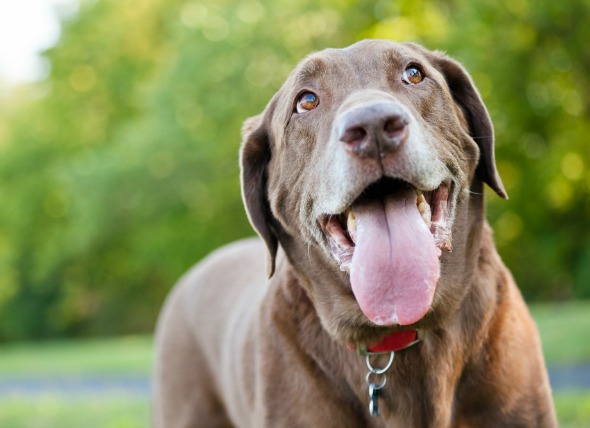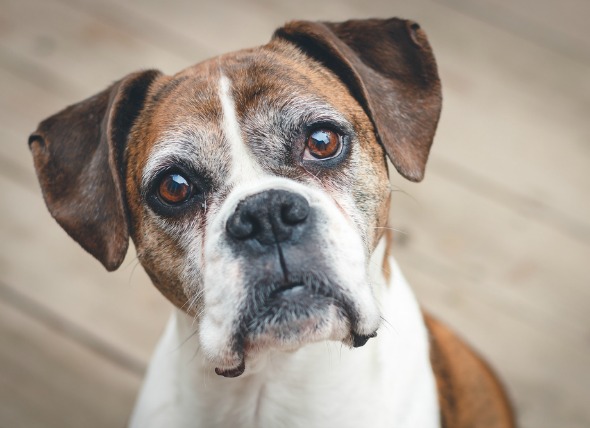
Thrombocytopathies are defined as disorders of the blood platelet and abnormal functioning of the platelets. Thrombocytopathic animals are those which typically have normal platelet counts on examination, but have spontaneous or excessive bleeding due to a failure of the platelets to bind to each other, or clot normally. Bleeding from the mucous membranes – nose, mouth ears, anus – is the most common sign. Thrombocytopathies may first become apparent in young animals when excessive bleeding occurs with the loss of baby teeth.
Thrombocytopathies can be acquired or hereditary; they affect the main functions of platelets: activation, adhesion and aggregation. That is, they lack the ability to group together and adhere to each other, an important function for sealing wounds. This can result in severe bleeding from even the smallest wound. Animals having a low blood platelet count with concurrent thrombocytopathia will bleed more excessively than expected for the existent platelet count. Any breed of dog can be affected by acquired thrombocytopathies, but some breeds may be more prone to certain types (see Symptoms and Causes, below).
Acquired thrombocytopathy
Hereditary thrombocytopathy
Your veterinarian will perform a complete physical exam on your dog after taking a full medical and background history, and a description of the onset of symptoms from you. Your veterinarian will order a biochemical profile, a complete blood count, a urinalysis and an electrolyte panel. The complete blood count may show a condition of anemia if bleeding has been severe. Platelet counts are often normal in dogs with inherited thrombocytopathies, but low counts are sometimes seen in otter hounds.
A von Willebrand disease assay can be performed in animals suspected of having this disease. Platelet function testing can also be done in select laboratories. Coagulation tests (prothrombin time [PT] and activated partial thromboplastin time [APTT]) should be ordered to eliminate coagulopathy (a disease affecting the blood's ability to clot) as a cause of the excessive bleeding.
Mucosal bleeding time can be measured by making a small incision on the inside of the cheek (buccal) in the mouth. The amount of blood and length of time it takes for the incision to be sealed with a clot of blood will either confirm or rule out a clotting disorder.
Patients with prolonged buccal mucosal times should be given special preparation before any surgery to prevent excessive bleeding during procedures. In addition, veterinarians should minimize injections to the patient and apply extended pressure after intravenous injections, intravenous catheterization, and invasive procedures.
Patients may be given a platelet transfusion to increase the number of platelets. This is also appropriate treatment if the underlying cause is von Willebrand disease. Patients should be transfused with platelets as a preventative measure or if it is noted that they are bleeding out. If your dog is anemic, whole blood or packed red cells should be transfused.
Animals with acquired thrombocytopathies should have the underlying cause of the disease treated. This means withdrawing them from certain medicines if necessary.
Thrombocyopathic pets may bleed at home, but it is very rare that they will bleed to death. Restrict your dog's activity during a bleeding episode, and try to avoid feeding hard foods to your dog, as some foods may cause friction to the gum tissue, resulting in bleeding. If a hereditary disorder is found to be underlying the clotting disorder, it is advisable to have your dog fixed so that it cannot breed.
 Mouth Cancer (Amelobastoma) in Dogs
Ameloblastoma in Dogs
Ameloblastoma, previously k
Mouth Cancer (Amelobastoma) in Dogs
Ameloblastoma in Dogs
Ameloblastoma, previously k
 Toad Venom Toxicosis in Dogs
Toad Poisoning in Dogs
Toad venom toxicity is rel
Toad Venom Toxicosis in Dogs
Toad Poisoning in Dogs
Toad venom toxicity is rel
 Vitamin D Poisoning in Dogs
Vitamin D Toxicity in Dogs
Vitamin D is a fat-sol
Vitamin D Poisoning in Dogs
Vitamin D Toxicity in Dogs
Vitamin D is a fat-sol
 Anxiety and Compulsive Disorders in Dogs
Obsessive Compulsive Disorder (OCD) in Dogs
Compu
Anxiety and Compulsive Disorders in Dogs
Obsessive Compulsive Disorder (OCD) in Dogs
Compu
 Legg-Calvé-Perthes Disease in Dogs
Disintegration of Hip Joint in Dogs
Legg-Calv&eac
Legg-Calvé-Perthes Disease in Dogs
Disintegration of Hip Joint in Dogs
Legg-Calv&eac
Copyright © 2005-2016 Pet Information All Rights Reserved
Contact us: www162date@outlook.com